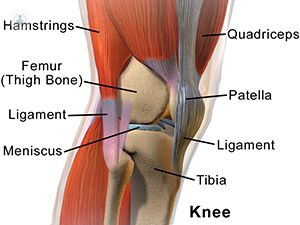Occasional Knee Pain
- Anterior knee pain is particularly common in young women and many runners. The symptoms of anterior knee pain vary some of you might have very mild pain, while some of you might have very severe pain. Some people feel a burning pain around their kneecap; others will get a sharp stabbing pain in their kneecap.
- Severe constant and intermittent knee pain are associated with 'unacceptable' symptoms in older adults with osteoarthritis (OA) 22. We hypothesized that constant and intermittent pain would be independently related to physical function, with intermittent knee pain being a better predictor of futur.
- Knee Osteoarthritis (Gonarthrosis) Firstly, sharp pain in the knee that comes and goes, usually caused by inflammation. Arthritis is one of the causes of common joint pain, where the particular joint gets inflamed. The arthritis of the knee joint which is called gonarthrosis is a condition of the weary articular cartilage.
Burning knee pain can occur in many places in the knee. For many people, the fronts and backs of the knees are the most common spots to feel a burning sensation. Sometimes, however, the sides of. Severe knee pain can occur in people of all ages for a range of reasons. Knowing the cause of severe knee pain can help a person seek treatment, relieve symptoms, and regain mobility.
The knee is the largest joint in your body and the one that bears most of your weight. Because of this, it’s a tough—and sometimes problem-prone—joint.
See 6 Types of Arthritis that Affect the Knee

When you're feeling knee pain, how do you know what caused it? Your doctor's diagnosis is the ultimate answer, but there are some clues to get you started on determining the cause.
See Possible Causes of Severe Knee Pain
Knee osteoarthritis develops as a joint’s cartilage wears down. Watch:Knee Osteoarthritis Video
Osteoarthritis

According to the CDC, nearly half of all people will experience symptoms of knee osteoarthritis at some point in their lives.
See What Is Knee Osteoarthritis?
That's why it's important to know the symptoms of knee osteoarthritis:
- Intermittent knee pain that gradually gets worse
- Knee pain that appears or gets worse when strain is put on the joint
- Pain in just one knee
- Knee stiffness, especially after a period of inactivity
- Knee swelling
- A knee that locks or gives out
See a complete guide to symptoms of knee osteoarthritis.
Bursitis
When the thin, fluid-filled sac that protects the joint (known as a bursa) becomes infected or inflamed, this is bursitis.
See Knee (Prepatellar) Bursitis
Many of the symptoms of knee bursitis are similar to osteoarthritis, but there are a few distinctive characteristics:
- A swollen region on the knee that’s “squishy” to the touch
- Tenderness when pressure is put on the knee
- Warmth or redness of the knee
- Fever or illness, which is a symptom of an infected bursa (also known as septic bursitis)
See a complete list of knee bursitis symptoms.
Knee pain from injury
Damage to the muscles, ligaments, tendons, and cartilage of the knee can cause pain if these tissues are overused or receive a blow or other injury.
This is particularly true in the case of these common knee injuries:
- A tear in the knee’s anterior cruciate ligament (ACL)
- A patellar tendon injury, also known as “jumper’s knee”
- Damage to the tendon between the kneecap and femur (thigh bone), known as patellofemoral pain syndrome (PPS) or “runner’s knee”
- A tear in the pads of cartilage in the knee known as the meniscus
Visit the knee injury section on Sports-health.com for in-depth, doctor authored and reviewed articles about these and other types of knee injuries.
Rheumatoid arthritis

Rheumatoid arthritis is a system-wide condition in which the immune system is attacking the joints and causing inflammation. So when rheumatoid arthritis shows up in the knee, chances are the smaller joints in the hands and feet have already been affected by pain and inflammation.
See What Is Rheumatoid Arthritis (RA)?
What Can I Do For Knee Pain
Rheumatoid arthritis in the knees can cause:
- Pain and inflammation in both knees at the same time
- Knees that are swollen, red, or warm to the touch
- Stiffness in the morning, which can last 30 minutes or more despite light activity
- General fatigue
- Fever
See a complete list of symptoms for rheumatoid arthritis.
If you’re experiencing knee pain that’s not relieved by a few weeks of self-care using NSAID pain medications and the RICE (rest, ice, compression, elevation) method, make an appointment to see your doctor so you can receive the right diagnosis and treatment.